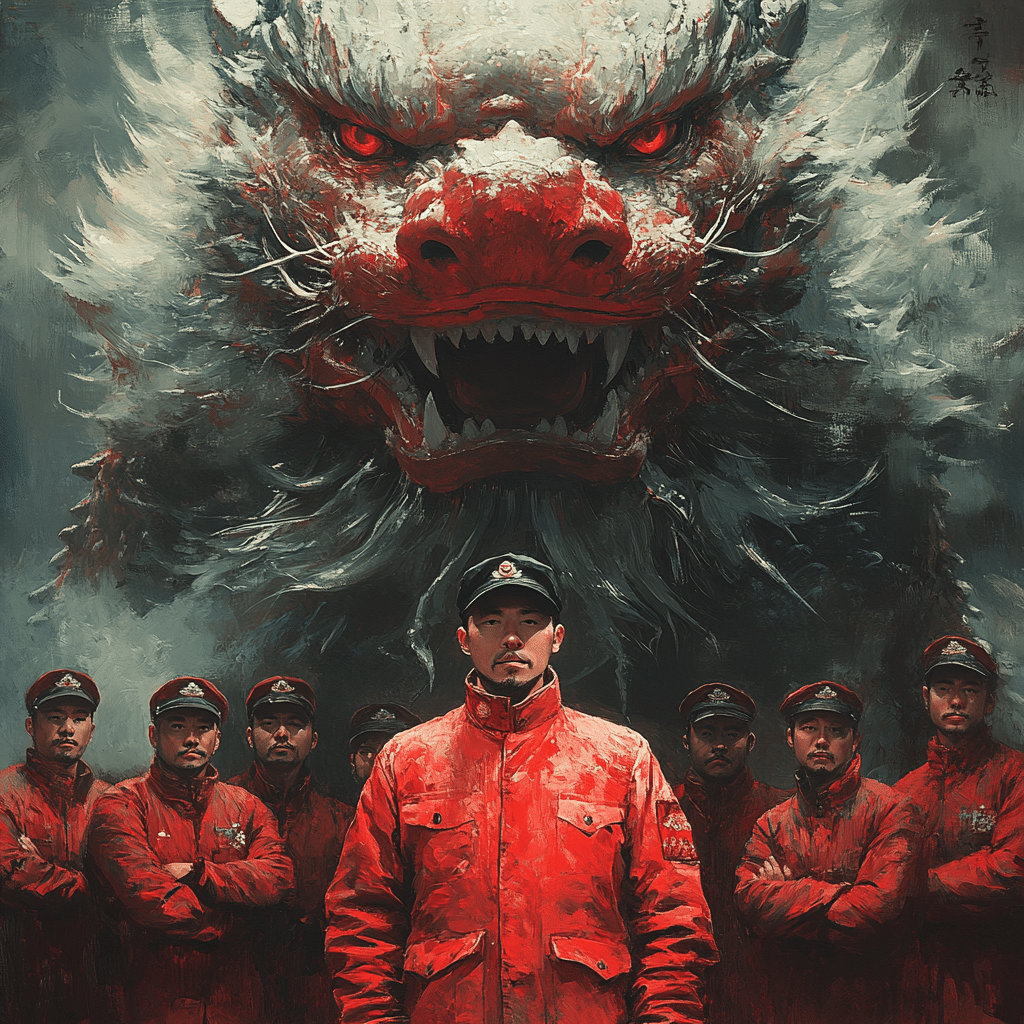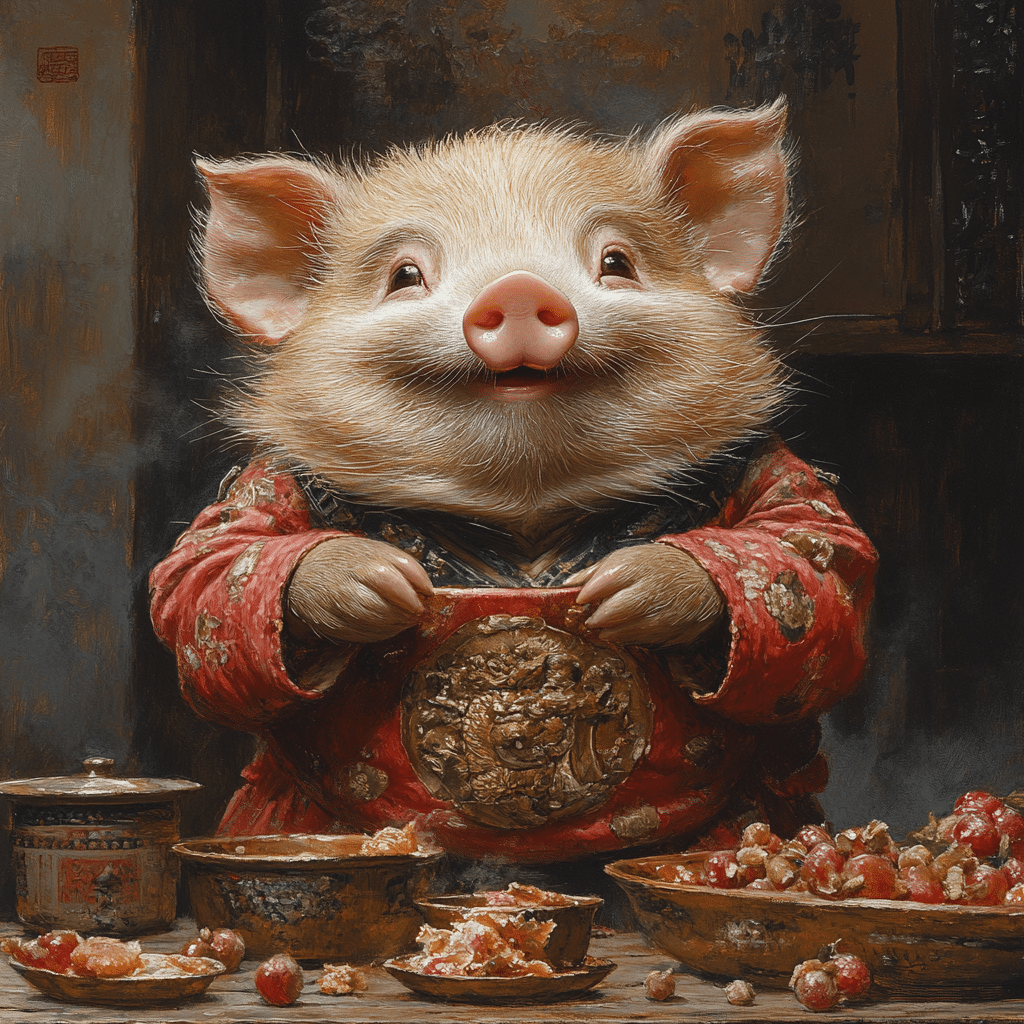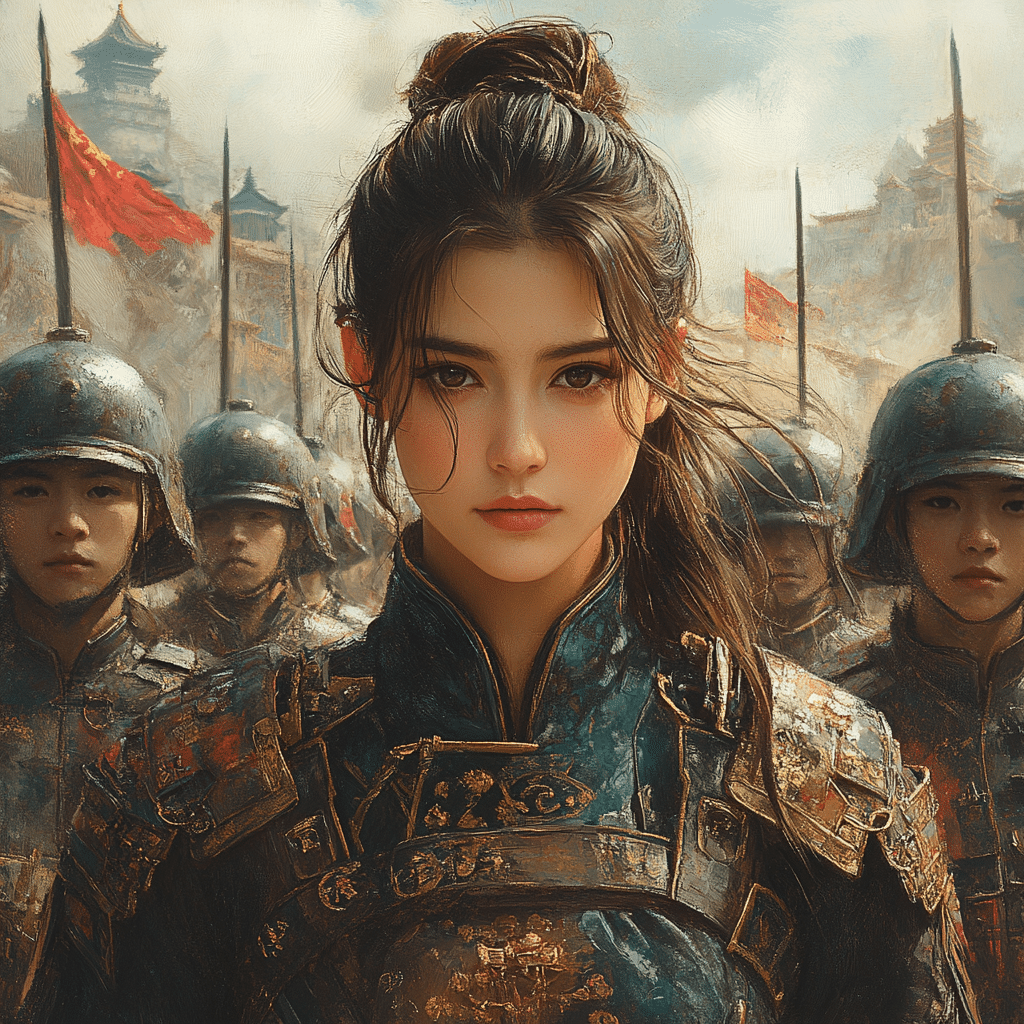Understanding the Chinese Meme Landscape
In recent years, the term “Chinese meme” (模因) has gained significant traction. It symbolizes a blend of humor, societal commentary, and digital expression specific to contemporary Chinese culture. With platforms like Weibo, Douyin (the Chinese version of TikTok), and Bilibili gaining popularity, memes are now essential communication tools among the youth. Chinese memes distinguish themselves by weaving intricate cultural references, unique linguistic plays, and vibrant visuals, which often reflect or challenge prevailing societal norms.
One key feature of Chinese memes is their reliance on 表情 (biǎoqíng) or facial expressions. These exaggerated images often serve as a visual shorthand for various emotions or situations, making them relatable across different contexts. The playful manipulation of language in memes also plays a critical role. Puns and wordplay are commonly used to create humor, providing a deeper connection among users. For instance, memes can repurpose well-known phrases or idiomatic expressions, transforming them into humorous commentary on everyday life in China.
The youth in China create and share memes as a form of self-expression and social bonding. As they riff off each other’s jokes, a unique language emerges, rich with shared references that may not resonate with outsiders. This exclusivity helps build communities around specific cultures, ideas, or trends, which become visible through rapidly shifting online interactions. Therefore, to understand the “Chinese meme” phenomenon, it’s essential to explore how these humorous creations impact social dynamics and engage broader cultural conversations.

Top 7 Examples of Chinese Memes That Transformed Digital Culture
Chinese meme culture has birthed numerous iconic examples that reflect social sentiments and trends. Here are seven standout Chinese memes that showcase this intricate tapestry:
The enduring image of the Tank Man from the Tiananmen Square protests has been reimagined across social media platforms. It stands as a symbol of individual expression against authority. This powerful adaptation not only highlights resilience and memory but also acts as a subtle protest against censorship.
Originating from the popular lifestyle platform Xiaohongshu, this meme scrutinizes the extravagant lifestyles often glamorized online. It humorously pokes fun at influencers, shedding light on the societal pressures faced by young Chinese women concerning beauty standards.
Borrowed from a Western meme, the “This is Fine” dog embodies the Chinese people’s often resigned humor amidst the chaos of modern urban life. It resonates deeply with many, showcasing an underlying struggle with rapid change and a hint of personal chaos.
Inspired by the global Black Lives Matter movement, this meme took off among Chinese netizens, adapting themes of injustice to account for domestic issues. It resonates with concerns around environmental degradation and economic disparity, providing a local lens on larger global movements.
This viral mantra from renowned director Zhang Yimou has found new life as an uplifting quote among younger audiences. It captures a spirit of hope that contrasts with the challenges faced in career and personal expectations, becoming both motivational and satirical.
A defining feature of workaholic culture in China, this meme humorously depicts the overwhelming amount of tasks people take on. With bold humor, it has sparked necessary discussions surrounding work-life balance and mental health awareness.
Popularized on Douyin, this challenge features participants dressed in creative outfits, seeming invisible. It provides a whimsical critique of consumerism by demonstrating both the desire to stand out and the overshadowing effect of mass production.
The Role of Platforms in Shaping Chinese Meme Culture
The platforms hosting memes greatly shape their evolution and reach. Weibo, with its microblogging format, facilitates rapid meme virality while engaging users in discussions. Douyin allows for innovative video adaptations, where creativity thrives. Each platform comes with its own user demographic, influencing the types of memes that develop.
Take the “I Can’t Breathe” meme as an example. While it emerged from global protests, its adaptation on Weibo highlights how local realities can reshape global themes. Users shared personal stories, lending a unique perspective to a widely recognized global issue. On the other hand, Douyin’s influence is evident in trends like the “Invisible Man” challenge, which thrives on the creativity encouraged by short video formats.
Understanding how different platforms shape meme culture provides insights into the creative processes at play. The rapid spread of memes across these platforms reflects not only individual expression but also collective cultural sentiments, aiding in the viral nature of these expressions. All in all, the relationship between platform design and meme culture is a compelling area for exploration.

The Interconnection of Chinese Meme and Social Commentary
Chinese memes frequently transcend humor, evolving into vehicles for social criticism and political satire. They serve as a lens through which societal issues are examined. The “I Can’t Breathe” meme, for instance, does not only offer comic relief; it functions as a statement against social injustices prevalent in China.
The clever satirical use of these memes allows for conversations around matters that would otherwise remain unspoken due to censorship. For example, the “I Am Busy” meme cleverly comments on China’s culture of overworking, sparking dialogues about the psychological impact of modern society on the youth.
As memes gain traction, they often reflect broader sentiments in society. They are attuned to political moments, economic stresses, and cultural shifts, offering a nuanced commentary that allows the public to engage in discourse that mainstream media may shy away from. Thus, memes emerge not just as jokes but as pivotal social commentaries that resonate with millions.
Cultural Nuances and Linguistic Play in Chinese Memes
One exceptional feature of Chinese memes is their deep-seated reliance on linguistic creativity. Puns, homophones, and idiomatic expressions play a vital role, broadening their appeal. The “Xiaohongshu Gossip Girl” meme, for example, utilizes a playful critique of influencer lifestyles, blending vernacular language with pop culture references in a way that strikes a chord with the audience.
Through clever wordplay, these memes create connections that resonate within their cultural context. This linguistic dexterity makes them memorable and shareable. Users can engage in reshaping these memes by incorporating their own experiences or perspectives, enriching the overall cultural dialogue.
Moreover, the subtleties within the Chinese language enhance the meme’s appeal. For instance, the interplay between imagery and text often invites a second look. The relationship between facial expressions and textual elements creates multi-layered meanings, allowing for greater audience participation. As memes tap into cultural nuances, they become more than just entertainment; they transform into shared narratives about modern life in China.
The Future of Chinese Memes: Trends and Predictions
As we step into the future, the landscape of Chinese memes is set to undergo further changes. The integration of augmented reality (AR) and artificial intelligence (AI) into meme culture is on the horizon. These technological advancements could significantly alter how memes are created and spread, enhancing user engagement.
Imagine a world where users create memes with AR filters that change based on the viewer’s mood or environment! This could open up new dimensions for creativity and personal expression, making memes an even more integral part of digital culture.
Additionally, as society continues to grapple with rapid urbanization, economic changes, and shifting cultural perceptions, memes will likely evolve accordingly. They may become more politically charged, reflecting the evolving landscape of Chinese society. As they serve as both reflections of society and precursors to cultural shifts, memes will continue to reveal insights into the collective psyche of contemporary China.
In conclusion, the phenomenon of Chinese memes is a rich tapestry interwoven into the daily lives, cultural critiques, and identities of millions. As they evolve, they will serve as both a mirror and a catalyst for future cultural developments, ensuring their place at the forefront of digital expression for years to come.
Chinese Meme: A Peek into Viral Culture
The Rise of the Chinese Meme
You might have noticed that humor travels fast online, and in China, chinese meme culture is a prime example. It’s a unique mix of comedy, irony, and cultural references that can leave you laughing, pondering, or sometimes a bit puzzled. Did you know the recent Chinese spanking scandal sparked a wave of memes that played on historical events and pop culture? Just like how a tense match between Cardiff City and Leeds United can have fans creating spontaneous chants, the behind-the-scenes moments of everyday life inspire new memes that capture the public’s imagination.
Meme Magic: Spreading Joy and Ideas
Memes serve as a digital language, leading to viral sensations attracting millions. One fascinating tidbit is how memes often tie into trending events, such as the upcoming Cardiff Singer Of The World 2024, sparking funny comparisons and playful jabs in online discussions. They harness a sense of community, uniting people around shared experiences—much like the way folks come together when exploring Stars in Jamaica or scooping up trendy dress Sneakers. The beauty of the chinese meme is that it’s not just a fleeting laugh; it builds a collective narrative that everyone can partake in.
From Humor to Reflection
Although memes can start as lighthearted fun, they can also pave the way for deeper social commentary. Much like Eddie Redmayne Movies often spark conversations about themes like love and loss, certain chinese meme trends reflect societal sentiments or concerns, highlighting the power of humor to discuss serious topics. By making someone chuckle, it opens doors for dialogue about what really matters. As these memes gain traction, they even inspire trends; think about how a quirk like a toddler new balance movement became the talk of the town, showcasing the playful side of parenting. The way memes evolve reminds us that laughter—and sometimes a good eye-roll—can go a long way in creating bonds that transcend borders.
In essence, the chinese meme phenomenon is a vibrant tapestry, beautifully woven with humor, culture, and a sprinkle of social insight. Whether you’re diving into the next trending topic or simply sharing a laugh with friends, there’s always something new and engaging just around the corner in this dynamic digital landscape.

What is meme in Chinese slang?
In Chinese slang, “meme” translates to “模因” (móyīn), which is a transliteration of the English word. It’s often used to describe internet memes or cultural ideas that go viral on social media and online platforms.
What is the Chinese bear meme saying?
The Chinese bear meme is often associated with humorous or sarcastic sayings, playing on the bear’s exaggerated expressions to convey relatable emotions or reactions in funny contexts.
What is meme in China?
In China, a meme refers to “模因” (móyīn), just like in English, and it typically involves images or videos that spread quickly online, often reflecting cultural phenomena or jokes.
What does 23333 mean in Chinese slang?
The term “23333” is a popular way to express laughter online in China, resembling the sound of giggling, and it’s often used to indicate amusement in a chat or comment section.
Why is it called a meme?
It’s called a meme because the word comes from the idea of replicating cultural elements or behaviors, like how genes pass on traits, but in this case, it’s about ideas or funny content sharing across the internet.
What is the Chinese beaver meme?
The Chinese beaver meme features a cute, animated beaver that lip-syncs to lines from “A Better Tomorrow,” highlighting the humor in matchingly exaggerated facial expressions with iconic film quotes.
What is the bear warning saying?
The bear warning saying usually conveys a message about being cautious or aware of bears in certain areas, blending humor with safety tips, often shared in a light-hearted manner.
What is the Chinese popular bear?
The Chinese popular bear often refers to a cartoon-style or expressive bear that captures various emotions, making it a common choice for memes and reactions in social media.
What is TikTok called in China?
In China, TikTok is called Douyin (抖音), which is specifically tailored for Chinese users and has features tailored to the local audience.
What does Ji Ni Tai Mei mean?
“Ji Ni Tai Mei” (既你太美) translates to “You’re so beautiful,” often used in a light-hearted, sometimes joking context to compliment someone’s looks.
What is GIF in Chinese?
GIF in Chinese is referred to as “动图” (dòngtú), which literally means “moving picture,” capturing the idea of animated images that circulate online.
What is the talking Chinese beaver saying?
The talking Chinese beaver is known for lip-syncing an iconic speech from “A Better Tomorrow,” delivering lines about independence with a humorous animated twist.
What is the bear awareness saying?
The bear awareness saying is typically a playful reminder to be cautious of bears, infused with humor, used in memes to lighten a serious topic.
What does the bear symbolize in China?
In Chinese culture, bears often symbolize strength and bravery, and they can also embody playfulness when depicted in a cartoon or meme context.
What is the Chinese frog saying?
The Chinese frog meme features a frog expressing relatable emotions, often used to convey a sense of confusion or humor in a playful way.
What does the expression meme mean?
The expression “meme” means a shared idea or concept that spreads and evolves, often humorously among people, especially on social media platforms.
What does Meimei mean in Chinese?
“Meimei” (妹妹) means “younger sister” in Chinese, but it’s also used affectionately to refer to young girls or women in various contexts.
What is cheem in Chinese?
“Cheem” is a slang term that denotes something being overly emotional or dramatic, often used to poke fun at overly sentimental expressions or actions.
What does da bing mean in Chinese?
“Da bing” (大饼) translates to “big pancake” in Chinese, but in slang, it can also refer to something flat or lacking in substance, often humorously critiquing something perceived as unimpressive.



